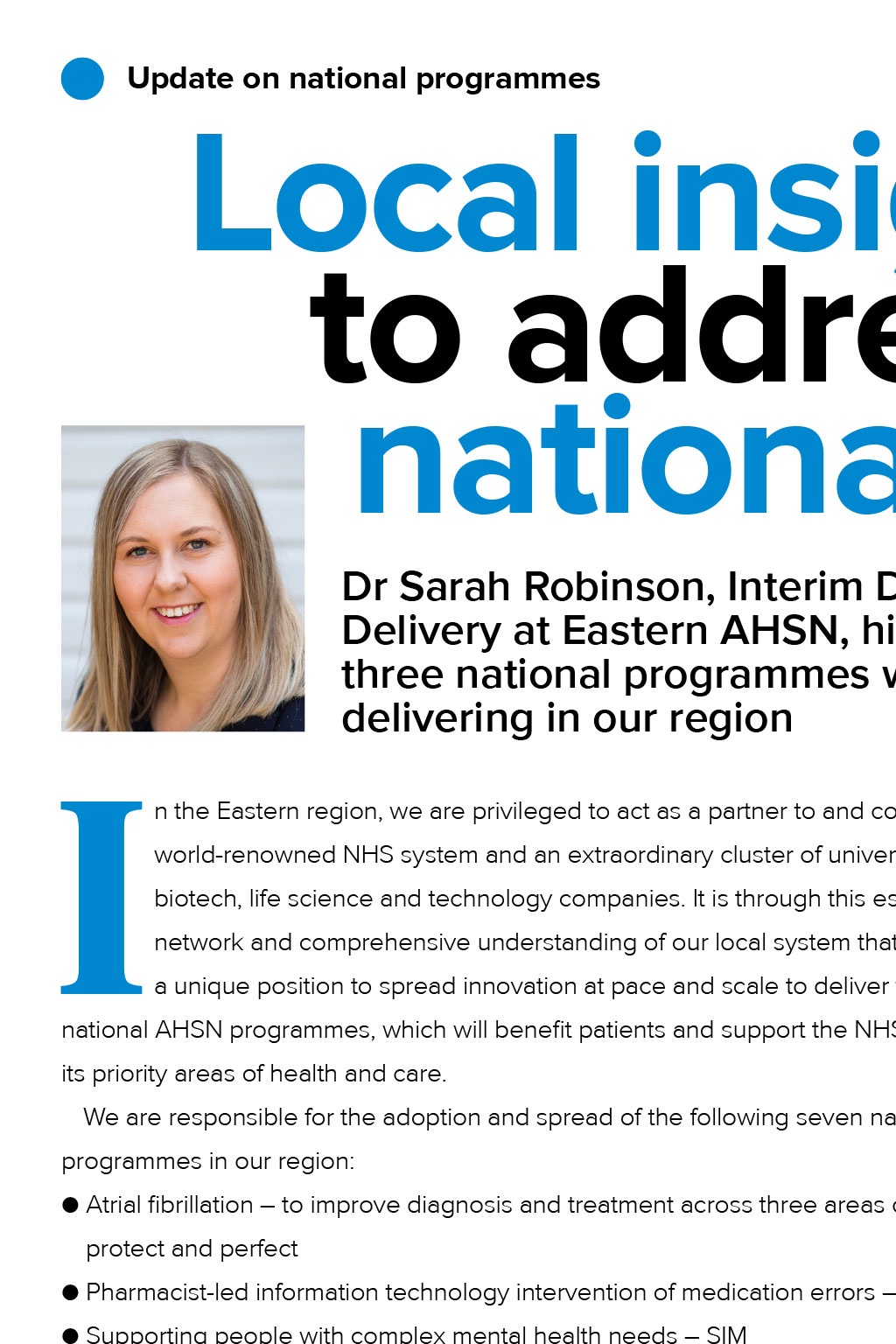
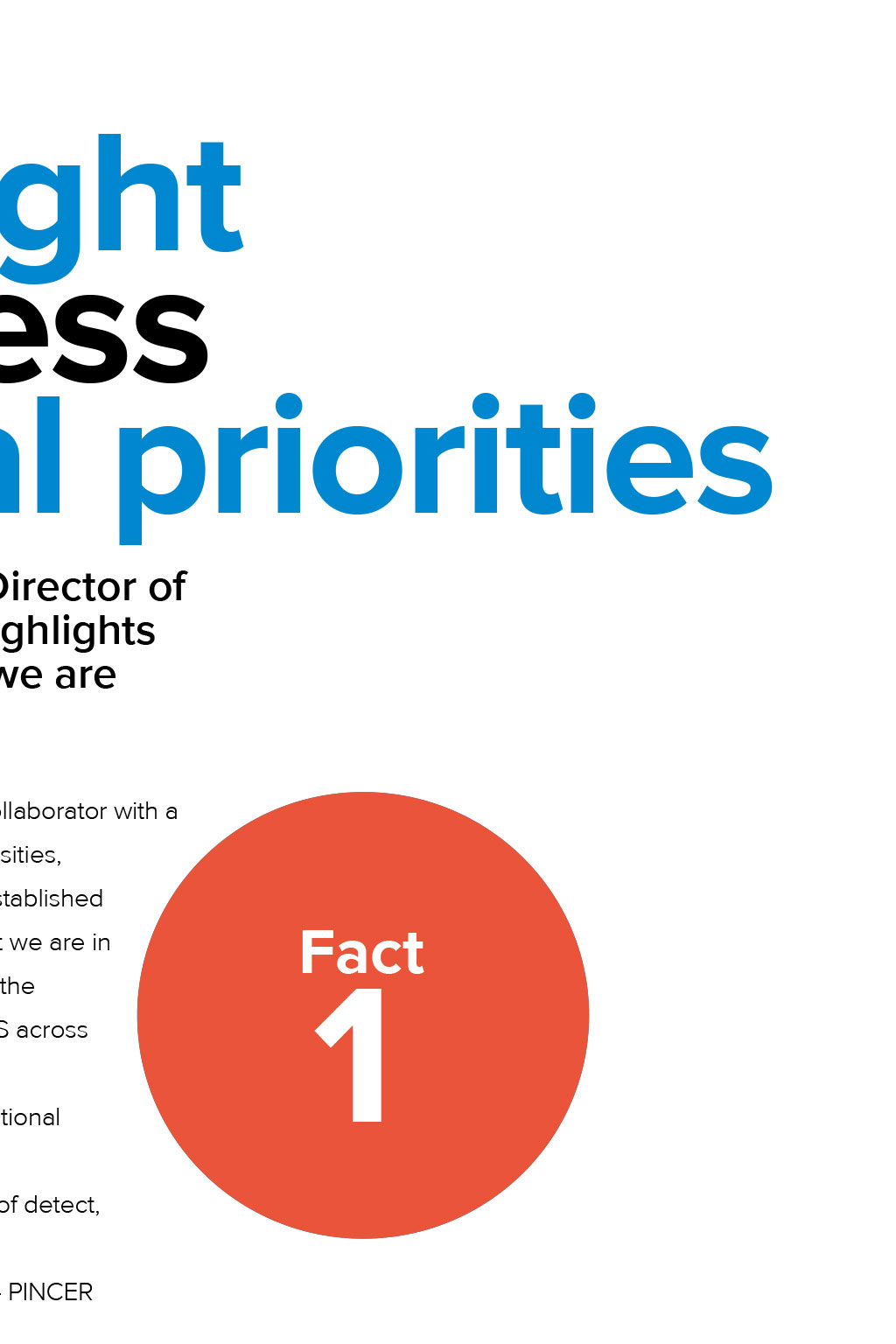
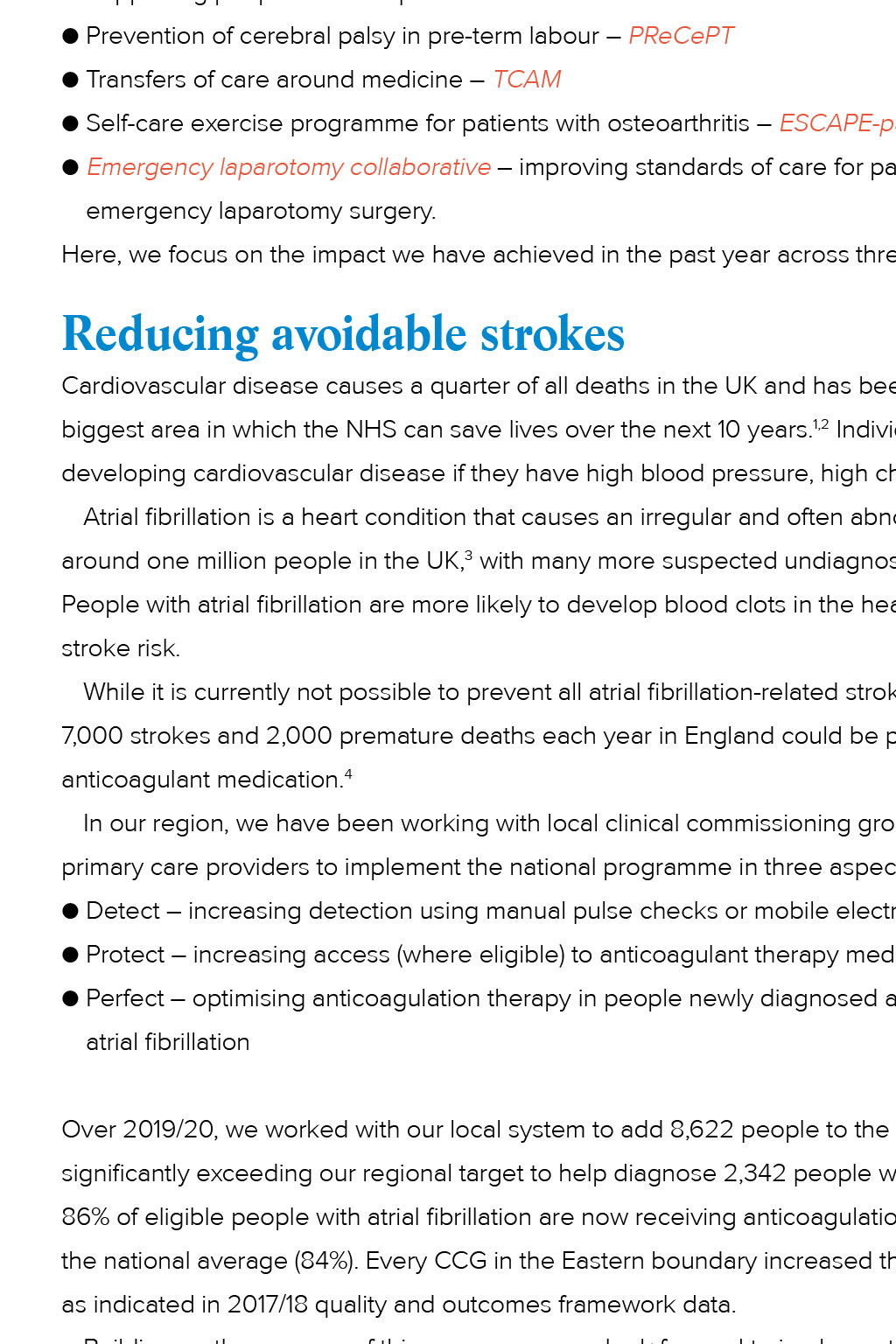
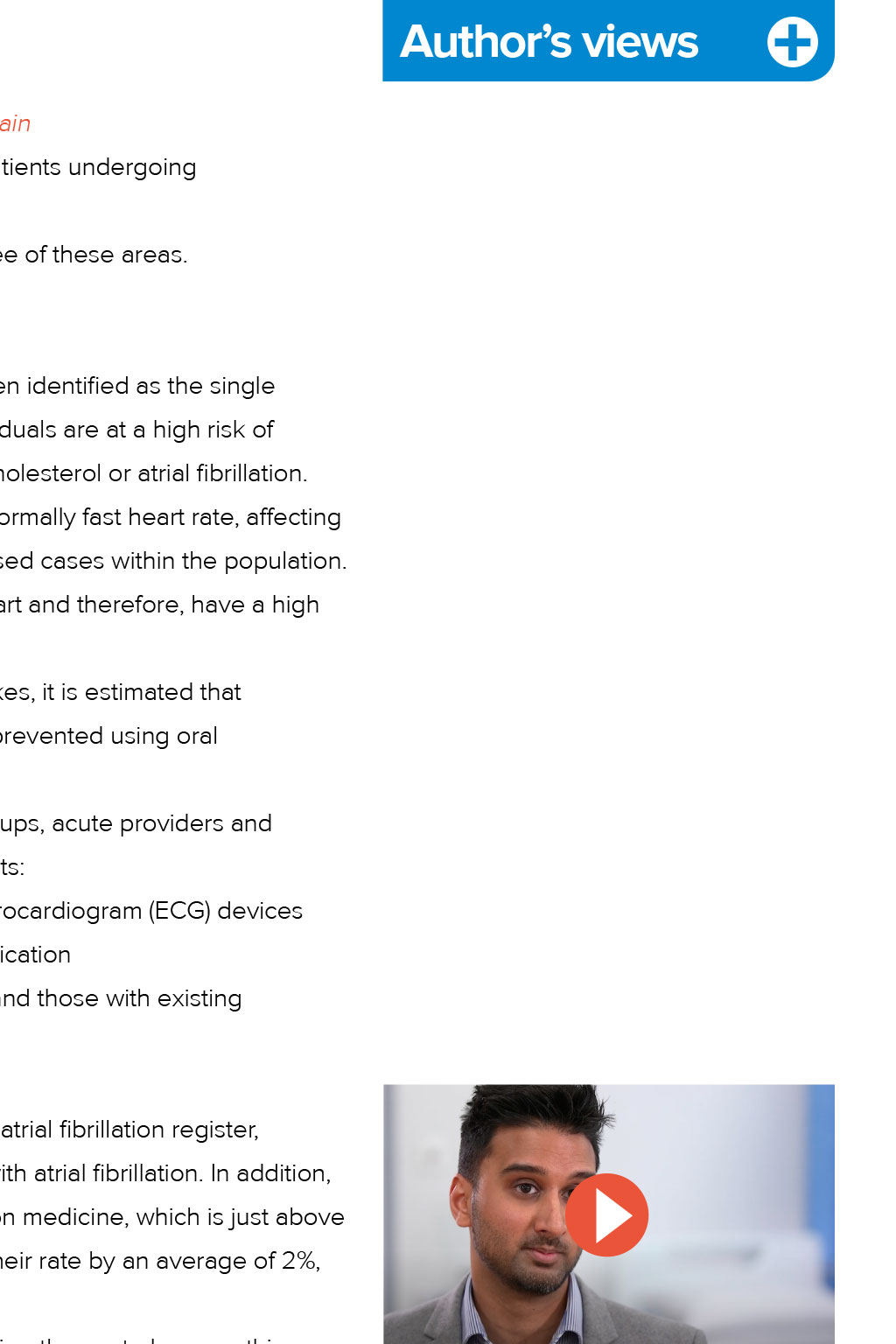
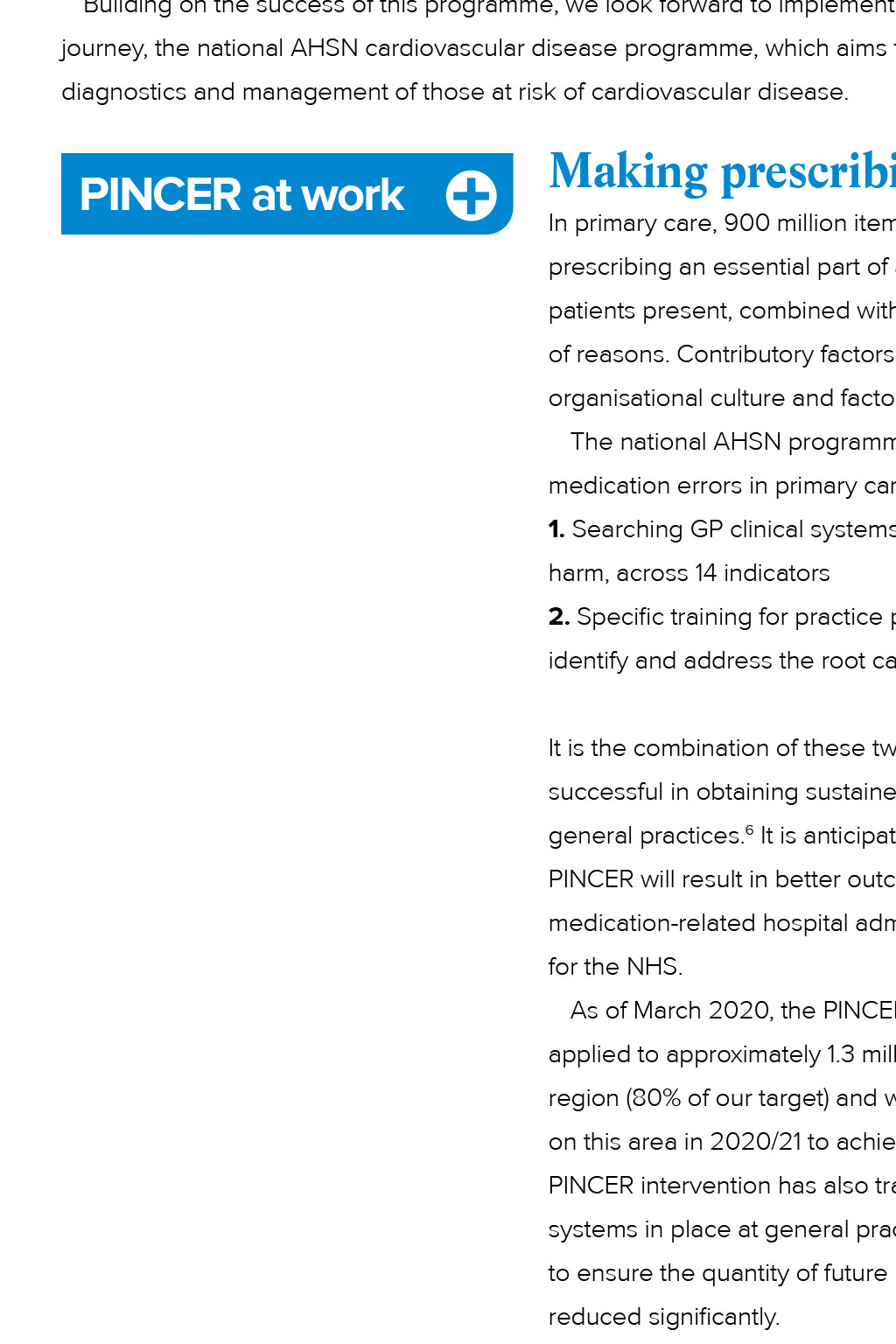
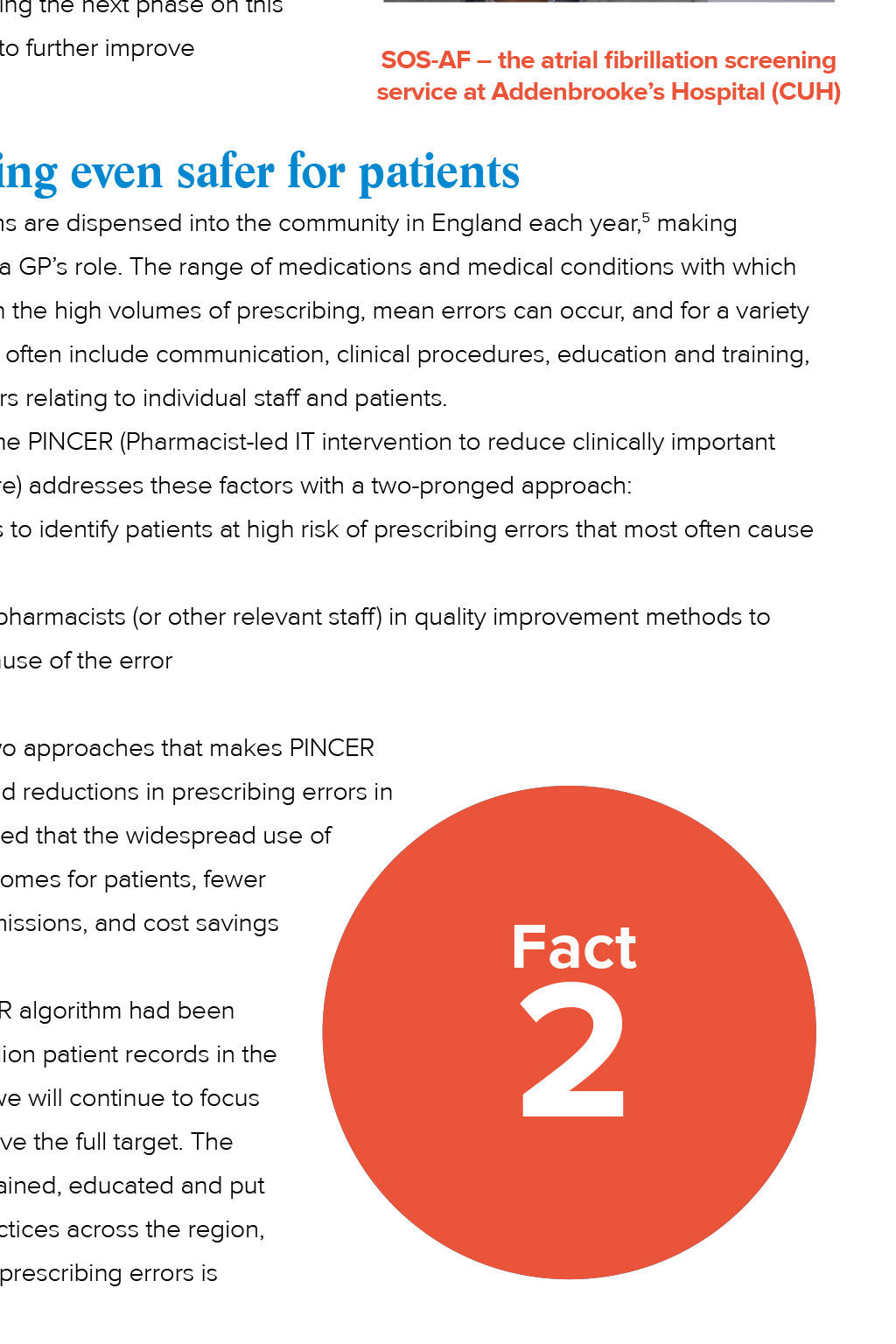

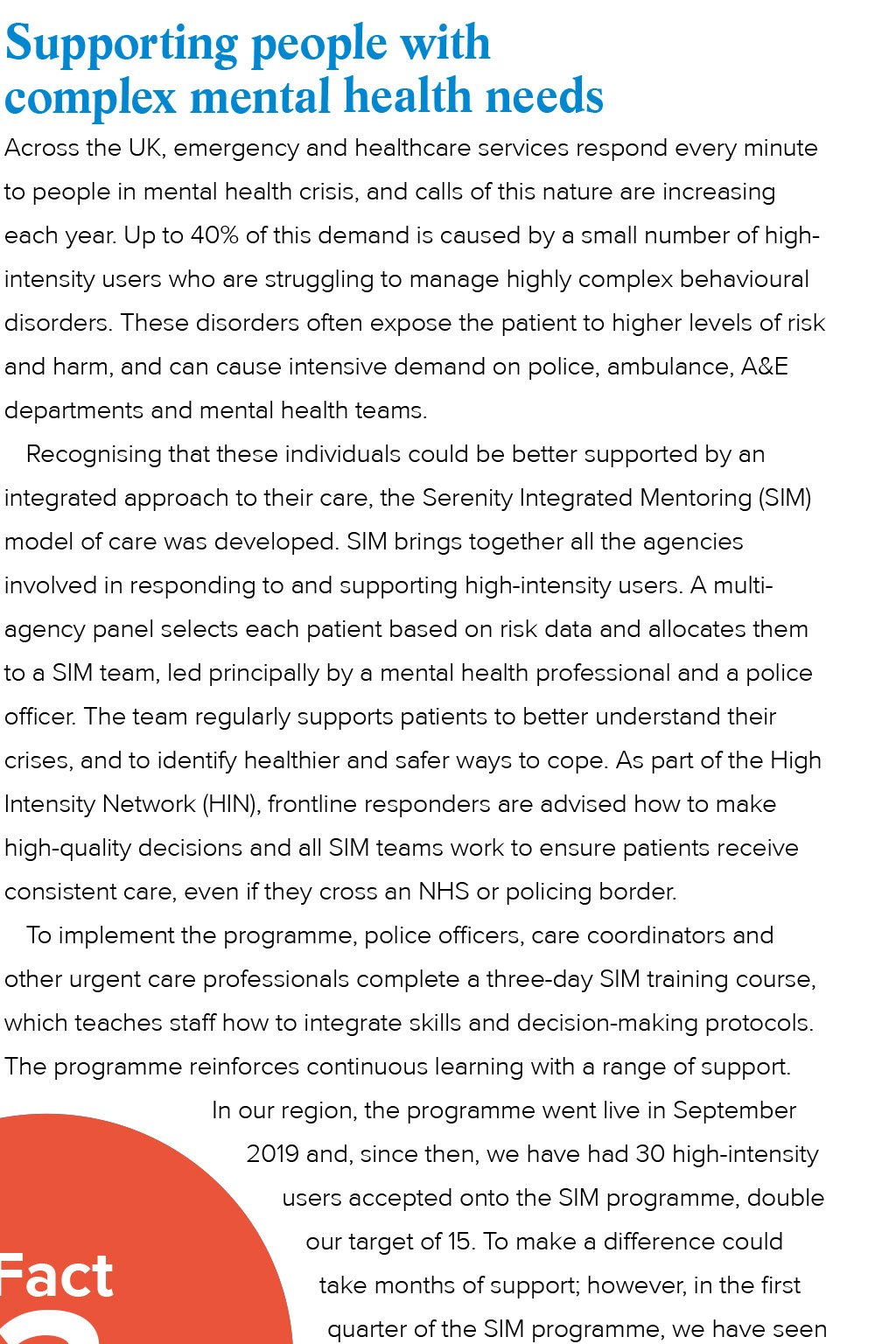
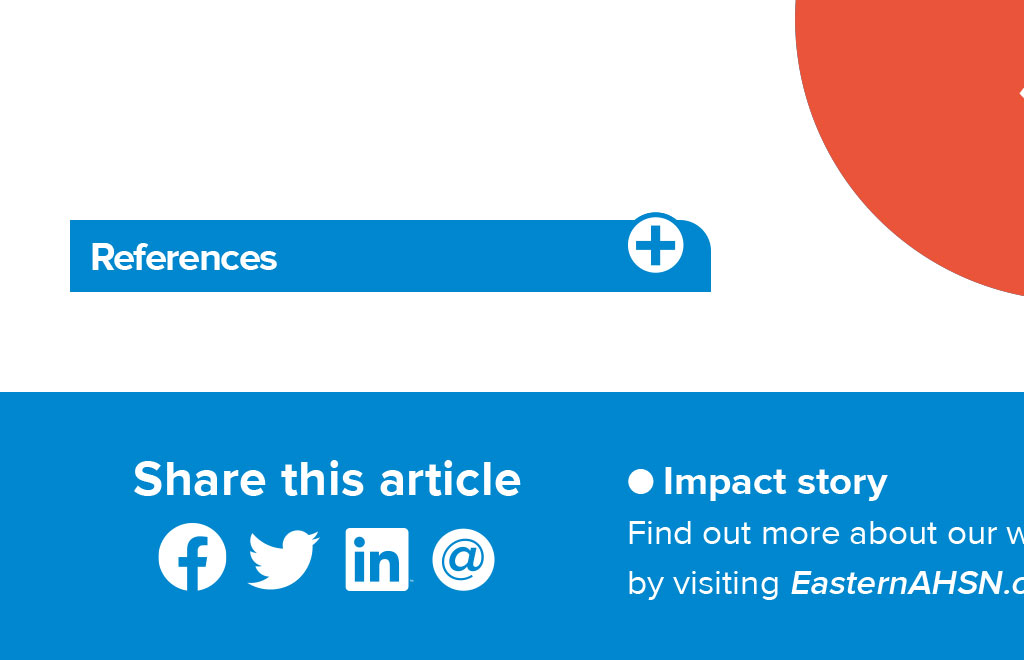
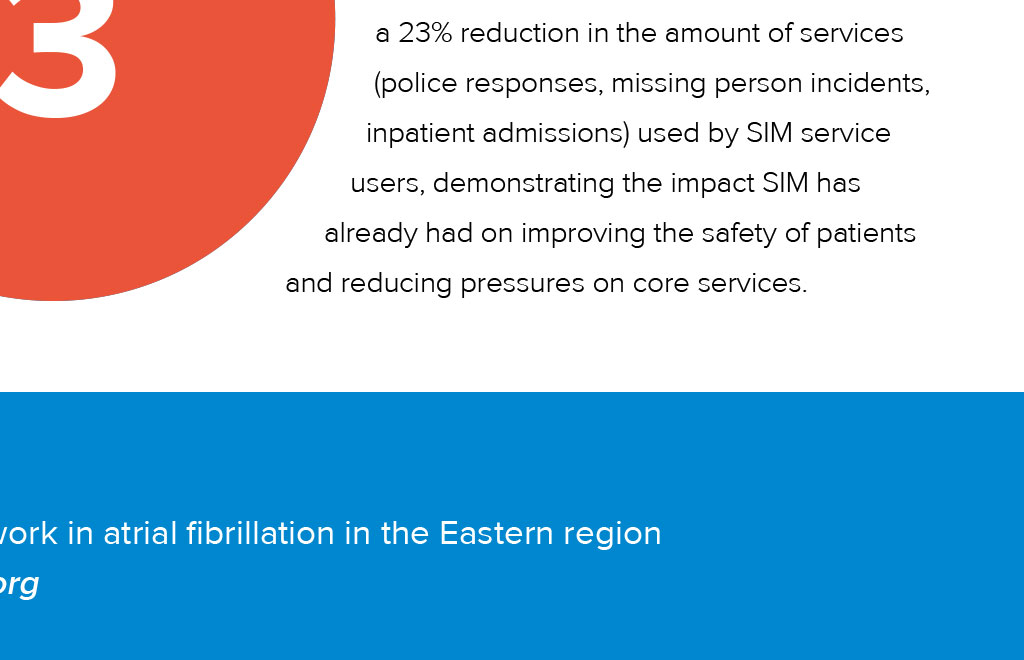











Update on national programmes Local insight to address national priorities I Dr Sarah Robinson, Interim Director of Delivery at Eastern AHSN, highlights three national programmes we are delivering in our region n the Eastern region, we are privileged to act as a partner to and collaborator with a world-renowned NHS system and an extraordinary cluster of universities, biotech, life science and technology companies. It is through this established network and comprehensive understanding of our local system that we are in a unique position to spread innovation at pace and scale to deliver the 8,622 Fact people added 1 to the atrial fibrillation register national AHSN programmes, which will benefit patients and support the NHS across its priority areas of health and care. We are responsible for the adoption and spread of the following seven national programmes in our region: A trial fibrillation to improve diagnosis and treatment across three areas of detect, protect and perfect P harmacist-led information technology intervention of medication errors PINCER S upporting people with complex mental health needs SIM Authors views P revention of cerebral palsy in pre-term labour PReCePT T ransfers of care around medicine TCAM S elf-care exercise programme for patients with osteoarthritis ESCAPE-pain Having recently joined Eastern E mergency laparotomy collaborative improving standards of care for patients undergoing AHSN, I have been impressed by the emergency laparotomy surgery. diverse collection of people Here, we focus on the impact we have achieved in the past year across three of these areas. committed to and enthusiastic for implementing change collaboratively Reducing avoidable strokes across the system at scale and pace, Cardiovascular disease causes a quarter of all deaths in the UK and has been identified as the single to ensure innovations are embedded biggest area in which the NHS can save lives over the next 10 years.1,2 Individuals are at a high risk of and sustained. developing cardiovascular disease if they have high blood pressure, high cholesterol or atrial fibrillation. As we take on new areas of work Atrial fibrillation is a heart condition that causes an irregular and often abnormally fast heart rate, in 2020/21, I am looking forward affecting around one million people in the UK,3 with many more suspected undiagnosed cases within the to implementing innovations in population. People with atrial fibrillation are more likely to develop blood clots in the heart and therefore, populations including young people have a high stroke risk. and older adults. Striving for reduced While it is currently not possible to prevent all atrial fibrillation-related strokes, it is estimated that inequality of access to healthcare 7,000 strokes and 2,000 premature deaths each year in England could be prevented using oral and increasing opportunities has anticoagulant medication.4 been a feature of my career to date In our region, we have been working with local clinical commissioning groups, acute providers and and an area with great potential primary care providers to implement the national programme in three aspects: to find innovative ways to deliver Detect increasing detection using manual pulse checks or mobile electrocardiogram (ECG) devices health benefit. Protect increasing access (where eligible) to anticoagulant therapy medication Perfect optimising anticoagulation therapy in people newly diagnosed and those with existing atrial fibrillation Over 2019/20, we worked with our local system to add 8,622 people to the atrial fibrillation register, significantly exceeding our regional target to help diagnose 2,342 people with atrial fibrillation. In addition, 86% of eligible people with atrial fibrillation are now receiving anticoagulation medicine, which is just above the national average (84%). Every CCG in the Eastern boundary increased their rate by an average of 2%, as indicated in 2017/18 quality and outcomes framework data. Building on the success of this programme, we look forward to implementing the next phase on this journey, the national AHSN cardiovascular disease programme, which aims to further improve SOSyAFytheatriallbrillationscreenin serviceatAddenbrookesHospitalHCUHIy diagnostics and management of those at risk of cardiovascular disease. PINCERatwork Making prescribing even safer for patients In primary care, 900 million items are dispensed into the community in England each year,5 making Used to treat an irregular heartbeat, prescribing an essential part of a GPs role. The range of medications and medical conditions with which amiodarone can, as a side effect, patients present, combined with the high volumes of prescribing, mean errors can occur, and for a variety impact thyroid function. As a result, of reasons. Contributory factors often include communication, clinical procedures, education and training, it is recommended that patients organisational culture and factors relating to individual staff and patients. have their thyroid function The national AHSN programme PINCER (Pharmacist-led IT intervention to reduce clinically important monitored every six months. If a medication errors in primary care) addresses these factors with a two-pronged approach: practice runs PINCER and identifies 1. Searching GP clinical systems to identify patients at high risk of prescribing errors that most often cause a patient who hasnt had their harm, across 14 indicators thyroid examined in the past six 2. Specific training for practice pharmacists (or other relevant staff) in quality improvement methods to months, the system will not only flag identify and address the root cause of the error that the patient needs reviewing, but also examine the systems in It is the combination of these two approaches that makes PINCER place to call patients for monitoring, successful in obtaining sustained reductions in prescribing errors in as part of a structured investigation. general practices.6 It is anticipated that the widespread use of PINCER will result in better outcomes for patients, fewer We supported 30 high-intensity The PINCER algorithm Fact emergency and healthcare medication-related hospital admissions, and cost savings for 2 the NHS. has been applied to service users to manage approximately 1.3 As of March 2020, the PINCER algorithm had been highly complex million patient behavioural disorders records in the region through our SIM applied to approximately 1.3 million patient records in the region (80% of our target) and we will continue to focus on this area in 2020/21 to achieve the full programme target. The PINCER intervention has also trained, educated and put systems in place at general practices across the region, to ensure the quantity of future prescribing errors is reduced significantly. Supporting people with complex mental health needs Across the UK, emergency and healthcare services respond every minute to people in mental health crisis, and calls of this nature are increasing each year. Up to 40% of this demand is caused by a small number of highintensity users who are struggling to manage highly complex behavioural disorders. These disorders often expose the patient to higher levels of risk and harm, and can cause intensive demand on police, ambulance, A&E departments and mental health teams. Recognising that these individuals could be better supported by an integrated approach to their care, the Serenity Integrated Mentoring (SIM) model of care was developed. SIM brings together all the agencies British Heart Foundation., (2020). UK Factsheet January 2020 [online]. British Heart Foundation. [Viewed 2nd June 2020]. Available from https://www.bhf. org.uk/what-we-do/our-research/heart-statistics involved in responding to and supporting high-intensity users. A multi- NHS Long Term Plan., (2019).Cardiovascular disease [online]. NHS Long Term Plan. [Viewed 2nd June 2020]. Available from https://www.longtermplan.nhs.uk/onlineversion/chapter-3-further-progress-on-care-quality-andoutcomes/better-care-for-major-health-conditions/ cardiovascular-disease/ officer. The team regularly supports patients to better understand their 1 2 NHS., (2020). Overview: Atrial fibrillation [online]. NHS. [Viewed 2nd June 2020]. Available from https://www. nhs.uk/conditions/atrial-fibrillation/ 3 NICE., (2014). Thousands of strokes and deaths from silent killer [online]. NICE. [Viewed 2nd June 2020]. Available from https://www.nice.org.uk/news/article/ thousands-of-strokes-and-deaths-preventable-fromsilent-killer 4 Avery A. J. et al., (2013). The prevalence and nature of prescribing and monitoring errors in English general practice: a retrospective case note review. British journal of general practice [online]. 63(613), e543-e553. Viewed 2nd June 2020. Available from https://doi.org/10.3399/bjgp13X670679 agency panel selects each patient based on risk data and allocates them to a SIM team, led principally by a mental health professional and a police crises, and to identify healthier and safer ways to cope. As part of the High Intensity Network (HIN), frontline responders are advised how to make high-quality decisions and all SIM teams work to ensure patients receive consistent care, even if they cross an NHS or policing border. To implement the programme, police officers, care coordinators and other urgent care professionals complete a three-day SIM training course, which teaches staff how to integrate skills and decision-making protocols. The programme reinforces continuous learning with a range of support. In our region, the programme went live in September 2019 and, since then, we have had 30 high-intensity 5 Avery A. J. et al., (2012). A pharmacist-led information technology intervention for medication errors (PINCER): a multicentre, cluster randomised, controlled trial and cost-effectiveness analysis. The \ Lancet [online]. 379(9823), p1310 p1319. Viewed 2nd June 2020. Available from https://doi.org/10.1016/ S0140-6736(11)61817-5 6 References Share this article We supported 30 high-intensity Fact emergency and healthcare 3 service users to manage users accepted onto the SIM programme, double our target of 15. To make a difference could take months of support; however, in the first quarter of the SIM programme, we have seen a 23% reduction in the amount of services highly complex (police responses, missing person incidents, behaviouraldisorders through our SIM programme inpatient admissions) used by SIM service users, demonstrating the impact SIM has already had on improving the safety of patients and reducing pressures on core services. Impact story Find out more about our work in atrial fibrillation in the Eastern region by visiting EasternAHSN.org